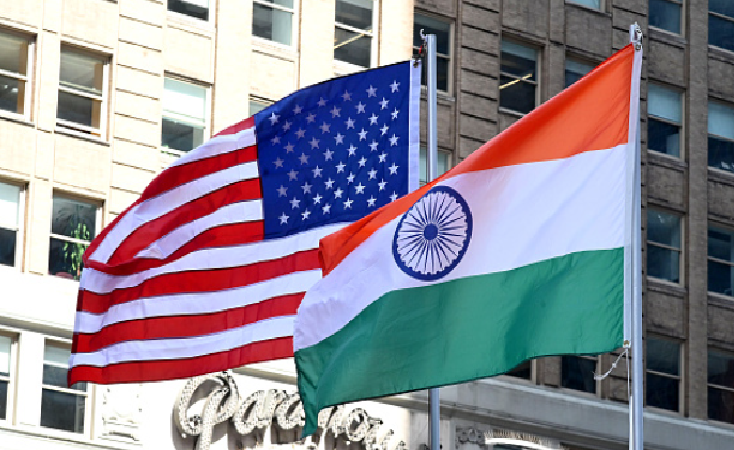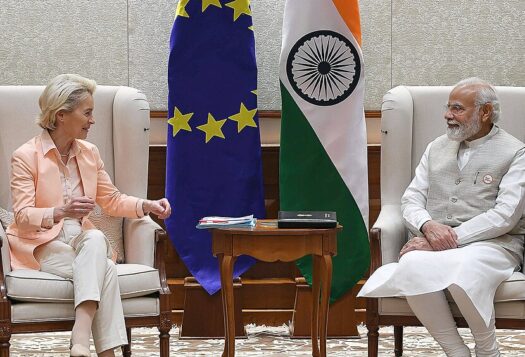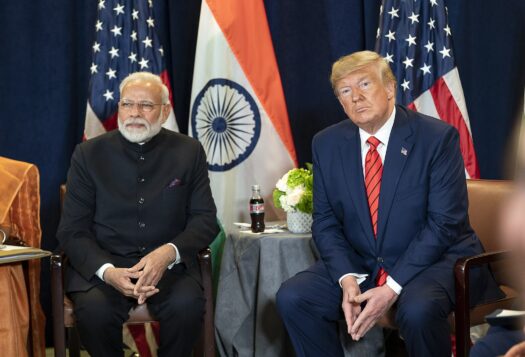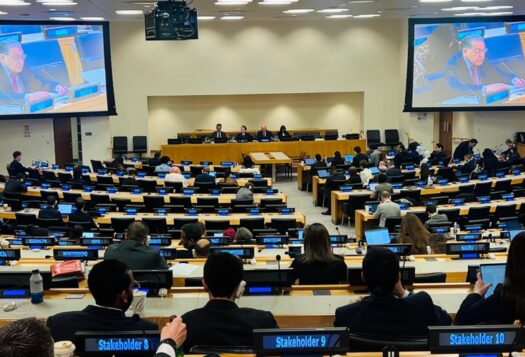
The inaugural meeting of the India-US Initiative on Critical and Emerging Technologies (iCET) was held on January 31st of this year in Washington, DC. The meeting, which was led by the National Security Advisors on both sides, was one of the first-ever bilateral discussions dedicated to technology cooperation. The last few years have showcased the centrality of technology at diplomatic summits, with a highlight on new foreign policy initiatives focused on emerging tech.
On the heels of the Trade and Technology Council (TTC) Agreement with the European Union, India has managed to initiate another tech-driven diplomatic agreement with the world’s biggest technological superpower, the United States. Last year’s announcement of the India-U.S. iCET was viewed with similar skepticism that prevails over many other India-U.S. agreements. Though India-U.S. ties have deepened in the last few decades, there has never been the camaraderie and trust to share critical information especially related to defense.
Hence, when the iCET was announced to be led by the respective Nation Security Councils of both countries, foreign policy analysts did not expect much to come out of such an initiative. However, January’s summit broke new ground in determining shared priorities under the initiative. Considering this is a bilateral and not a multilateral agreement, where it’s harder to achieve consensus and get the ball rolling, the outcomes intended to achieve as part of iCET appear promising.
Focus on Dual-Use Technologies
Since the announcement of the iCET, the Indian and U.S. National Security Councils at the helm of the initiative have focused attention on emerging technologies with defense or military implications. The National Security Advisors of both countries led talks at the first meeting on military technologies and agreed to focus on innovation in technologies with both commercial and military uses going forward.
Though India-U.S. ties have deepened in the last few decades, there has never been the camaraderie and trust to share critical information especially related to defense.
Technologies with dual-use applications are essential in maintaining military superiority while retaining technological competence. India is one of the world’s largest arms and defense-related technology importers while the United States stands as the world’s leading arms exporter. Given their shared interests in defense issues, particularly in the Indo-Pacific, dual-use technologies are at the forefront of iCET. The two countries have agreed to kickstart a Defense Industrial Cooperation Roadmap to accelerate technological cooperation between both countries for the joint development and production of military equipment.
The iCET press brief also mentions a shared commitment to enhance long-term research and development cooperation for military technologies through an “Innovation Bridge” connecting U.S. and Indian defense start-ups. Different technologies such as semiconductors, artificial intelligence (AI), and quantum technologies that have crucial dual-use capabilities feature as the areas for strengthening innovation between the two countries under the iCET.
Multifaceted Capacity Building
Furthermore, the iCET expands its focus beyond information sharing and technology transfers in critical technology areas to capacity building for developing and utilizing emerging technologies holistically in the two countries.
The iCET aims to improve the human capital in India and the United States by launching a joint task force with the Association of American Universities and leading Indian educational institutions, which will recommend research and university partnerships for students and young tech professionals. In this way, the iCET seeks to build capacity by investing in individuals who can develop and deploy applications using critical technologies.

It is not just the human capital that the iCET seeks to invest its resources on. The initiative also tries to build institutional capacity in both countries by signing a new Implementation Arrangement for a Research Agency Partnership between the National Science Foundation of the US and Indian science agencies to expand international collaboration in various emerging technology areas.
Decoupling High-Tech Supply Chains
While the iCET serves as a positive step in deepening technology collaboration between India and the United States, geopolitics and geoeconomics remain at the heart of the initiative. For example, iCET seeks to bolster resiliency in critical technology supply chains due to knock-on security vulnerabilities arising from economic dependencies. To build resilience, discussions have acknowledged the need to decouple critical value chains from adversaries.
The iCET carries forward several other diplomatic objectives of strengthening technology supply chains while reducing dependencies across the value chain. One of the important areas remains the semiconductor supply chain, which is fraught with intrinsic dependencies and bottlenecks. The iCET mentions the need for India-U.S. collaboration in the chip industry to bridge such dependencies and create a techno-democratic restructuring of the existing value chain.
Similarly, the iCET also delves into the need for cooperation in the field of telecommunications in which China and its domestic tech giants, such as Huawei and ZTE, have taken the lead. The iCET aims to foster more state-led investment into open tech initiatives such as the O-RAN, which ensures that next-generation telecommunications are built on open standards and prevents vendor lock-in. This is in the hope that adversaries do not dominate the intellectual property (IP) and standards aspect, which would disadvantage techno-democracies such as the United States and India.
The collaboration opportunities with the United States that iCET provides will help India get easy access to critical digital infrastructure, bypass the export control restrictions and ensure new opportunities for business and defense domestically.
Readouts from the iCET meeting also mention deeper cooperation in rare earth processing between the two countries. With renewable energy and the Electric Vehicle (EV) sector emerging as an arena of geo-economic competition, iCET recognizes the need to strengthen the strategic and commercial partnership in the field to reduce existing global dependencies on China and its processing plants.
The first meeting of the iCET lays down specific deliverables that the initiative hopes to achieve while maintaining cautious optimism. The initiative remains a blessing for India, which seeks to establish its presence in the global value chains of emerging technologies. The collaboration opportunities with the United States that iCET provides will help India get easy access to critical digital infrastructure, bypass the export control restrictions and ensure new opportunities for business and defense domestically. In the long run, the initiative will also ensure the capacity building of individuals and institutions in emerging tech areas, ensuring India’s rise as a potential global tech power.
***
Image 1: Jamie McCarthy/Getty Images
Image 2: Manjunath Kiran/AFP via Getty Images


